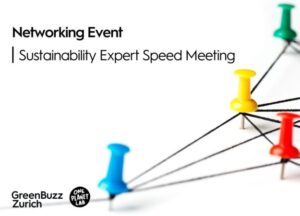At many companies, managers agree that their organisation needs to encourage greater levels of agility so that it can react quickly and flexibly to the requirements of the business. Agile transformation processes are complex – and managers need to step up to ensure that change can take root at every level of a company.
Change ‘led by example’
As far as change is concerned, it is critically important for a company’s managers to act as role models. This is also a powerful tool for motivating employees. In the complex world of work, where it’s hard to keep an overview of everything that’s going on, role models offer both direction and focus. Managers lead by example and thereby inspire employees to follow in their footsteps. They share ideas about things that might be possible and make employees feel that even impossible tasks could be achievable.
However, this means that managers need to be clear about the precise objectives to be achieved and the steps required for this. Consequently, they have to take a strategic and tactical approach to questions of ‘why’ and ‘how’, or the issue of their ‘vision’ and ‘mission’. If a company’s managers recognise innovation and disruptive, entrepreneurial behaviour, and actively practise these things themselves, they will clear this first hurdle with ease. Managers who treat their employees with honesty and respect will generally enable them to identify better with the change than if they promise them a bonus, for example. Managers who take calculated risks and push themselves to the limit, making courageous decisions and admitting their mistakes, lead by example.
A cultural transformation, as shown by Markus
If a manager is willing to actively get to grips with their position as a role model, this in itself corresponds to a cultural transformation within the management team. Trust, assertiveness and the practice of transparency are on the agenda for managers. The management team continues to develop its own mindset and leads by example where change is concerned, thereby showing that new (or simply different) relationship structures can work well.
Markus, a member of the executive board at an insurance company, is an example of this: in the wake of a company-wide leadership programme, he decides to develop his department’s management culture, changing or reforming relationships with its managers. As a result, he suggests to his department’s management team that they should select an array of basic management topics. These topics are then to be discussed twice a year at a one-day event attended by all the managers, with the steps to be taken decided on the basis of this event. To do so, he creates a space for learning in which the company’s culture of learning and flexibility is encouraged and exemplified. They deal with topics such as trust and power, leadership and demographic change, handling new models of work, and the role of management in informal networks, as well as trust and delegation. While Markus is very open-minded and highly curious by nature, he frequently runs into challenges, as not all his managers and employees are happy about this experiment. Thanks to a certain amount of persistence on the part of the management team, however, a new form of interaction emerges after four years – and teamwork is firmly established. This example shows that changing framework conditions enables experiments to be carried out. These experiments do not just have a wholly positive outcome: they also permit new behaviours and ways of working to take root across an entire company.



